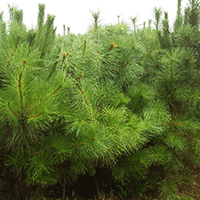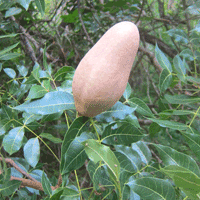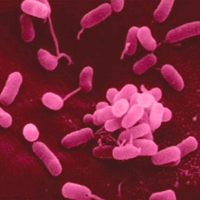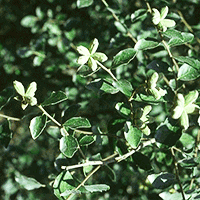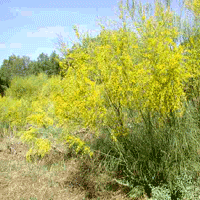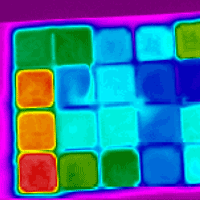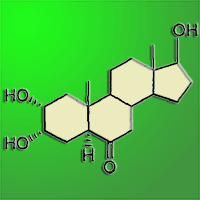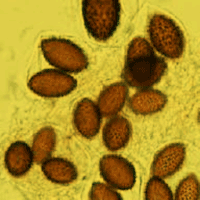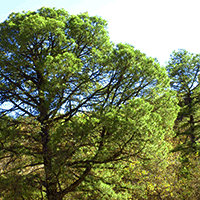
Substrates and nutrient addition rates affect morphology and physiology of Pinus leiophylla seedlings in the nursery stage
Mayra Velén Buendía Velázquez, Miguel Ángel López López , Víctor Manuel Cetina Alcalá, Lamine Diakite
iForest - Biogeosciences and Forestry, Volume 10, Issue 1, Pages 115-120 (2016)
doi: https://doi.org/10.3832/ifor1982-009
Published: Oct 02, 2016 - Copyright © 2016 SISEF
Research Articles
Abstract
Production of forest seedlings is expensive mainly due to the use of inputs such as peat moss and fertilizers. Seedling survival in field conditions is low when seedlings with limited internal nutrient reserves are used in low fertility sites. In this work, raw sawdust and exponential fertilization were tested against peat-moss and constant fertilization, the common components of containerized seedling production systems in Mexico. The experiment was carried out under nursery conditions by using a complete randomized experimental design with a 2×2 factorial arrangement. Two substrates â peat-moss (PM) and sawdust (SA) â and two nutrient addition rates â constant (CR) and exponential (ER) â were tested. The response of seedlings was assessed based on diameter at the root collar, seedling height, dry weight (shoot, root, total and 100-needle), Dickson quality index (DQI), slenderness index (SI), and foliar nutrient concentrations and contents. Analysis of variance indicated that the substrate significantly affect all dry weights, with the greatest biomass observed for PM. Similarly, DQI and SI were affected by the substrate, with PM showing the best DQI and highest SI. Neither plant quality variables nor dry weights were affected by nutrient addition rates. Both substrate and nutrient addition rate significantly affected N, P, and K foliar concentrations. At the end of the production cycle, SA promoted higher foliar concentrations of N and P than PM, but not those of K. This suggests that K limited the growth of seedlings in sawdust, likely due to the low capacity of this substrate to adsorb K. ER produced needle concentrations of N, P, and K significantly higher than those of CR (2.65 vs. 2.26 %, 2303 vs. 2011 ppm, and 4235 vs. 3949 ppm, respectively). Our results indicate that ER is likely to give rise to more suited seedlings for outplanting in low fertility sites than CR.
Keywords
Pinus leiophylla, Peat-moss, Sawdust, Constant and Exponential Fertilization Rate
Authors’ Info
Authors’ address
Miguel Ángel López López
Víctor Manuel Cetina Alcalá
Lamine Diakite
Colegio de Postgraduados Campus Montecillo, Carretera México-Texcoco Km 36.5, 56230 Montecillo (Mexico)
Corresponding author
Paper Info
Citation
Buendía Velázquez MV, López López MÁ, Cetina Alcalá VM, Diakite L (2016). Substrates and nutrient addition rates affect morphology and physiology of Pinus leiophylla seedlings in the nursery stage. iForest 10: 115-120. - doi: 10.3832/ifor1982-009
Academic Editor
Giustino Tonon
Paper history
Received: Jan 12, 2016
Accepted: Jun 12, 2016
First online: Oct 02, 2016
Publication Date: Feb 28, 2017
Publication Time: 3.73 months
Copyright Information
© SISEF - The Italian Society of Silviculture and Forest Ecology 2016
Open Access
This article is distributed under the terms of the Creative Commons Attribution-Non Commercial 4.0 International (https://creativecommons.org/licenses/by-nc/4.0/), which permits unrestricted use, distribution, and reproduction in any medium, provided you give appropriate credit to the original author(s) and the source, provide a link to the Creative Commons license, and indicate if changes were made.
Web Metrics
Breakdown by View Type
Article Usage
Total Article Views: 49695
(from publication date up to now)
Breakdown by View Type
HTML Page Views: 41442
Abstract Page Views: 3141
PDF Downloads: 3881
Citation/Reference Downloads: 57
XML Downloads: 1174
Web Metrics
Days since publication: 3324
Overall contacts: 49695
Avg. contacts per week: 104.65
Citation Metrics
Article Citations
Article citations are based on data periodically collected from the Clarivate Web of Science web site
(last update: Mar 2025)
Total number of cites (since 2017): 12
Average cites per year: 1.33
Publication Metrics
by Dimensions ©
Articles citing this article
List of the papers citing this article based on CrossRef Cited-by.
References
Nutrición de cultivos [Crop nutrition]. Colegio de Postgraduados, Montecillo, TX, Mexico, pp. 454. [in Spanish]
Gscholar
Procedimientos y cálculos básicos, útiles en la operación de viveros que producen plantas en contenedor [Basic procedures and calculations for the operation of container-system nurseries]. CONAFOR, Programa Nacional de Reforestación, DF, Mexico, pp. 45. [in Spanish]
Gscholar
Prácticas de reforestación, manual básico [Afforestation practices, basic manual] (1st edn). CONAFOR, DF, Mexico, pp. 64. [in Spanish]
Gscholar
Evaluation of three growing media substrates for western larch seedling production at the USDA Forest Service Coeur d’Alene Nursery. In: Proceedings of the meeting “Forest and Conservation Nursery Associations 2008” (Dumroese RK, Riley LE eds). RMRS-P-58, USDA Forest Service, Fort Collins, CO, USA, pp. 37-41.
Online | Gscholar
Crecimiento de Pinus montezumae Lamb. En vivero influenciado por diferentes mezclas de sustratos [Growth of Pinus montezumae Lamb. in the nursery, as influenced by varying substrate mixtures]. Agrociencia 48 (6): 627-637. [in Spanish]
Gscholar
Niveles críticos nutrimentales preliminares para especies forestales de México a nivel de vivero [Preliminary nutrient critical levels for nursery stage mexican forest species]. Bachelor’s thesis, Universidad Autónoma Chapingo. Chapingo, México, pp. 151. [in Spanish]
Gscholar
Seedling quality of Southern pines. In: “Forest Regeneration Manual” (Duryea ML, Dougherty PM eds). Kluwer Academic Publishers, Netherlands, pp. 159.
Gscholar
Manual de viveros para la producción de especies forestales en contenedor [Nursery manual for container production of forest species]. In: “Nutrimentos minerales y fertilización (vol. 4)”. USDA, Portland, Oregon, USA, pp. 7-60. [in Spanish]
Gscholar
Detección de deficiencias de hierro en Pinus leiophylla a partir de los efectos de dilución y concentración nutrimental [Detection of iron deficiency in Pinus leiophylla, from dilution and concentration effects]. Terra Latinoamericana 25 (1): 9-15. [in Spanish]
Gscholar
Interpretación de nomogramas de análisis de vectores para diagnóstico nutrimental de especies forestales [Interpretation of vector analysis nomograms for nutrient diagnosis of forest species]. Madera y Bosques 16 (1): 99-108. [in Spanish]
Gscholar
Nutrição e fertilização florestal” [Forest nutrition and fertilization]. Instituto de Pesquisas e Estudos Florestais, Piracicaba, SP, Brazil, pp. 427. [in Portuguese]
Gscholar
Monografía de Pinus leiophylla Schl. et Cham. [Monography of Pinus leiophylla Schl. et Cham.]. INIFAP, DF, Mexico, pp. 85. [in Spanish]
Gscholar
Physiology of woody plants (3rd edn). Academic Press, Boston, MA, USA, pp. 37-41.
Gscholar
Caracterización de medios de crecimiento compuestos por corteza de pino y aserrín [Characterization of pine-bark-and-sawdust-made growing media]. Madera y Bosques 14 (2): 41-49. [in Spanish]
Gscholar
Silvicultura de las coníferas de la región central [Silvics of the conifers from Central Mexico]. MSc Thesis, Universidad Autónoma Chapingo, División de Ciencias Forestales, Mexico, pp. 305. [in Spanish]
Gscholar
Seedling morphological evaluation: what you can tell by looking. In: “Evaluating seedling quality; Principles, Procedures, and Predictive Abilities of Major Test” (Duryea ML ed). Forest Research Lab, Oregon State University, Corvallis, OR, USA, pp. 59-71.
Gscholar

